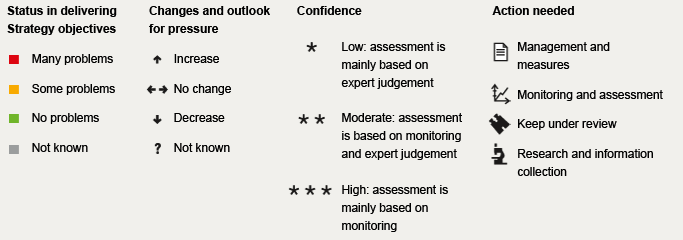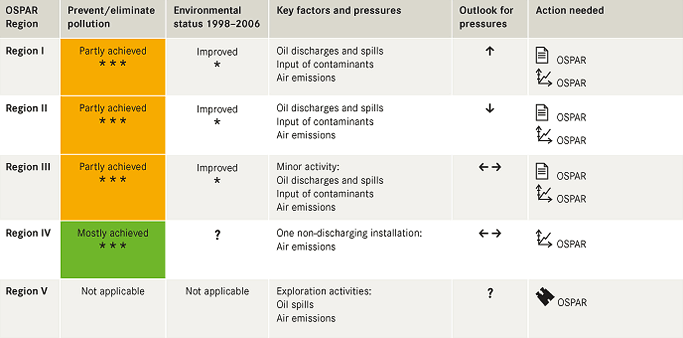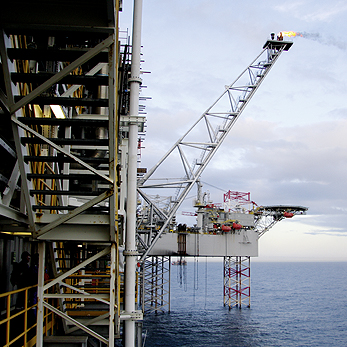
What happens next?
Environmental status has improved
Cooperation between OSPAR and the offshore industry has allowed a range of issues to be addressed, including discharges of produced water and the use and discharge of chemicals. This cooperation has also supported the introduction of environmental management systems by operators.
The target of a 15% reduction in oil discharges in produced water has been achieved at the OSPAR level, set against a trend for increasing produced water generation. The increase in produced water is due to the maturing of oil reservoirs, particularly in Region II. Injection of produced water has proved technically challenging for some installations, mainly due to reservoir properties. Substitution of certain chemicals by other less hazardous chemicals has also proved technically challenging. Impacts of offshore oil and gas activities have reduced around some installations but the evidence base is limited. Concerns over impacts of the offshore industry on the marine environment continue, especially those relating to oil and chemicals discharged with produced water, impacts from historic cuttings piles and atmospheric emissions.
Further management efforts are needed to address all impacts
OSPAR should address the following priorities for action:
- Continue to work towards the target for ceasing discharges, emissions and losses of hazardous substances and achieving a reduction of oil in produced water discharged to the sea to a level which will ensure that the discharges will present no harm to the marine environment by 2020.
- Move towards a risk-based approach to managing produced water that embraces more substances than oil.
- Consider aligning the management of chemicals used and discharged offshore (substances covered, the data and information base, and management criteria) through OSPAR’s harmonised mandatory control system with the requirements of the EU REACH Regulation.
- Continue monitoring and assessment and improve the evidence base for future assessments of the impacts of the offshore industry on marine ecosystems.
OSPAR should examine whether there are specific issues relating to ageing installations and infrastructure and, if required, develop appropriate measures, taking into account possible extensions in the life of infrastructures. OSPAR should also investigate the impact of underwater noise from the offshore oil and gas industry and, as appropriate, develop guidance on best practice for its mitigation.
Oil and gas production is at different stages and intensities in the OSPAR Regions. OSPAR should consider whether its current measures are suitable for the northern part of Region I where increasing oil and gas activity is expected.
Delivering OSPAR Strategy objectives for the offshore oil and gas industry


